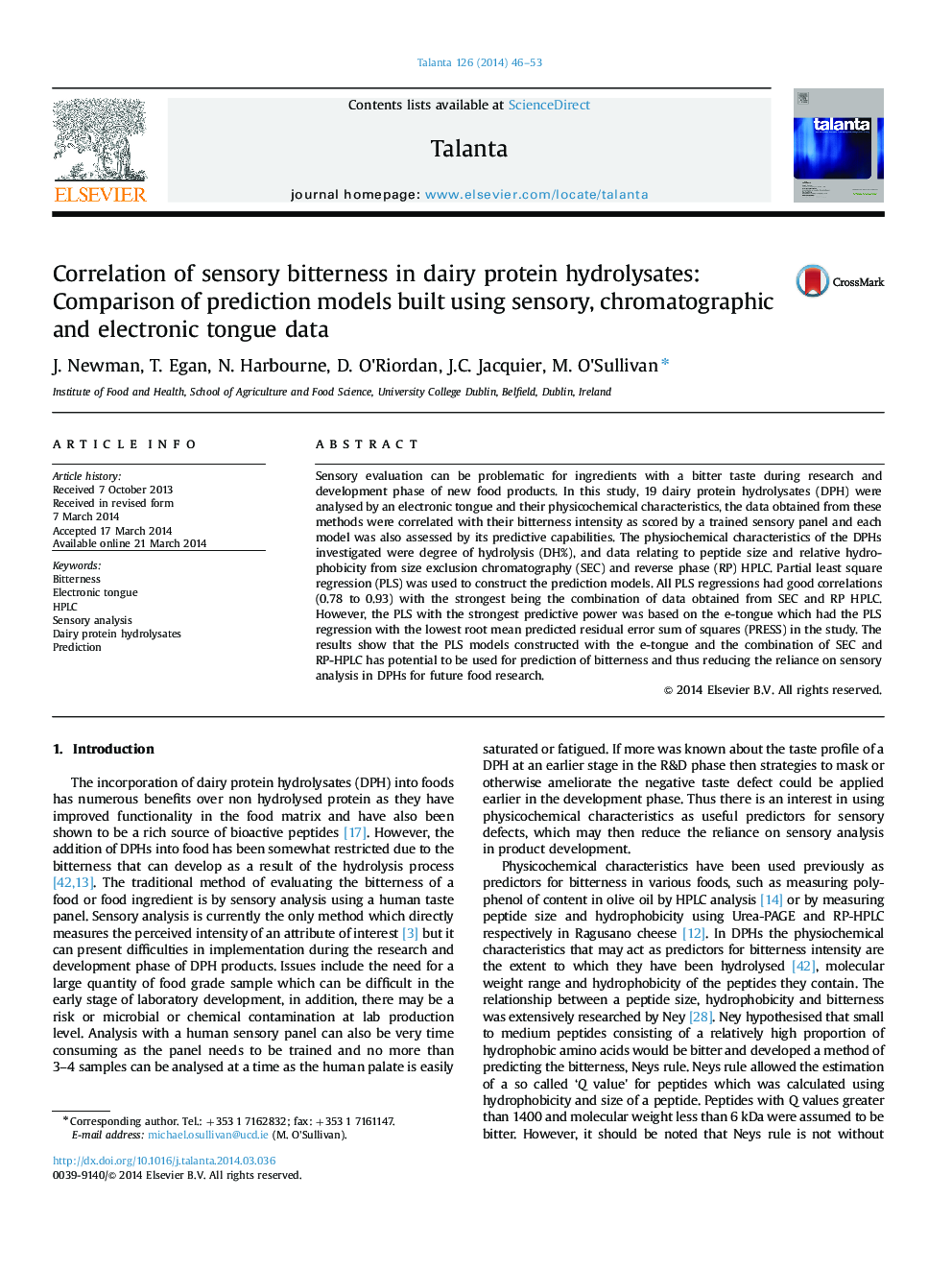| Article ID | Journal | Published Year | Pages | File Type |
|---|---|---|---|---|
| 1242272 | Talanta | 2014 | 8 Pages |
•Instrumental assessment of bitterness in dairy protein hydrolysates.•Correlation of sensory bitterness with e-tongue data.•Correlation of sensory bitterness with HPLC data.•Comparison of bitterness prediction by HPLC and e-tongue.
Sensory evaluation can be problematic for ingredients with a bitter taste during research and development phase of new food products. In this study, 19 dairy protein hydrolysates (DPH) were analysed by an electronic tongue and their physicochemical characteristics, the data obtained from these methods were correlated with their bitterness intensity as scored by a trained sensory panel and each model was also assessed by its predictive capabilities. The physiochemical characteristics of the DPHs investigated were degree of hydrolysis (DH%), and data relating to peptide size and relative hydrophobicity from size exclusion chromatography (SEC) and reverse phase (RP) HPLC. Partial least square regression (PLS) was used to construct the prediction models. All PLS regressions had good correlations (0.78 to 0.93) with the strongest being the combination of data obtained from SEC and RP HPLC. However, the PLS with the strongest predictive power was based on the e-tongue which had the PLS regression with the lowest root mean predicted residual error sum of squares (PRESS) in the study. The results show that the PLS models constructed with the e-tongue and the combination of SEC and RP-HPLC has potential to be used for prediction of bitterness and thus reducing the reliance on sensory analysis in DPHs for future food research.
Graphical abstractFigure optionsDownload full-size imageDownload as PowerPoint slide
